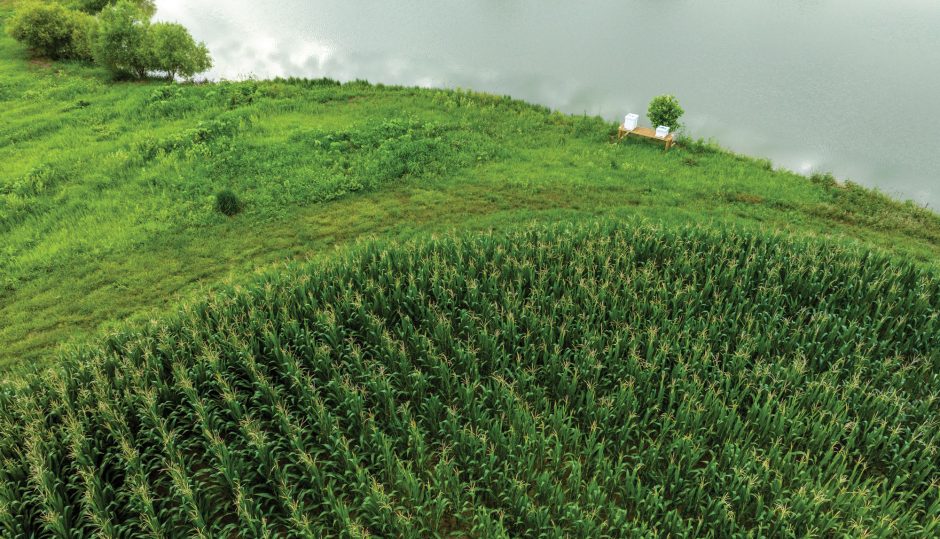
Published on Show Me Mizzou Sept. 4, 2023
Story by Dale Smith, BJ ’88
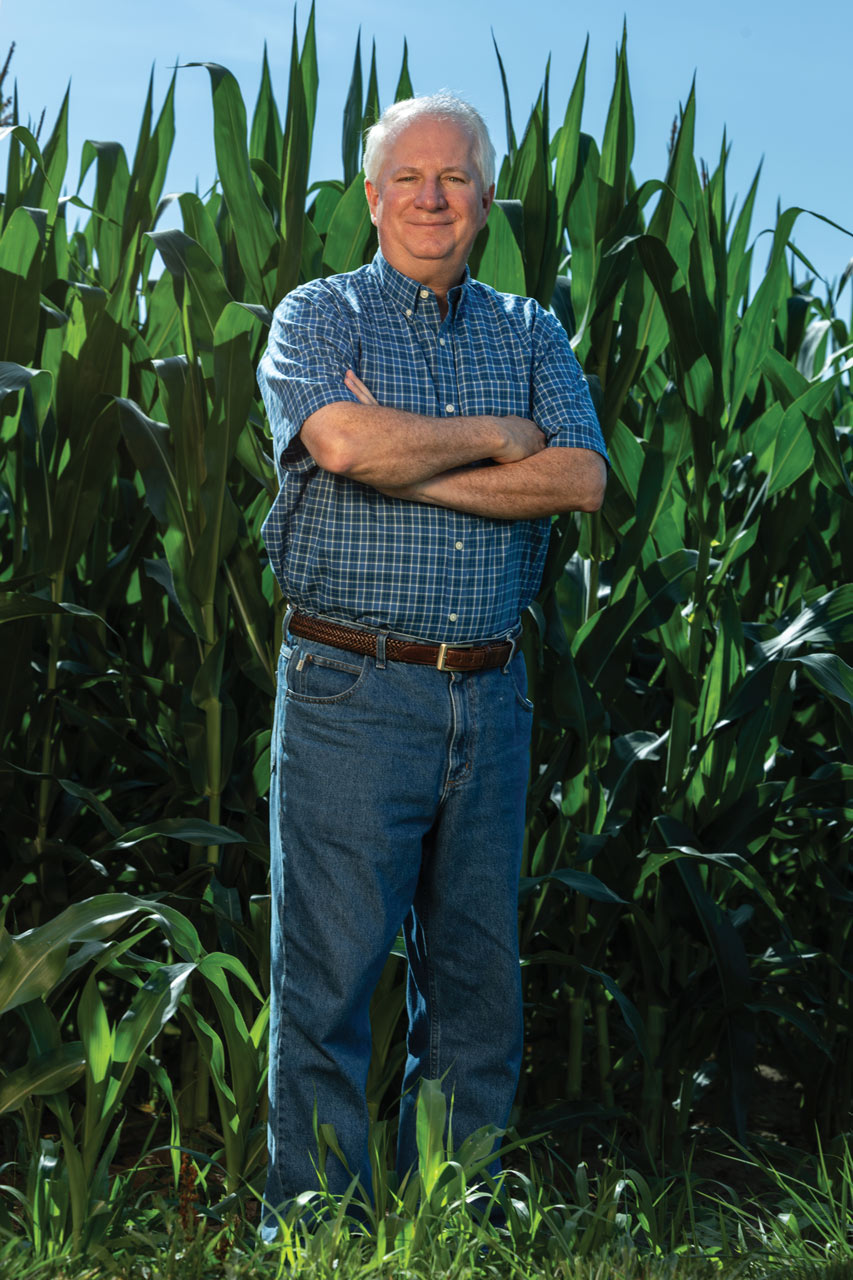
After a rainstorm at his mother’s farm, agricultural researcher Rob Myers found himself at the boundary of her land and an adjoining field as a striking sight streamed past his feet.
“The water coming off my mother’s farmland was perfectly clear,” says Myers, director of Mizzou’s Center for Regenerative Agriculture. “But just a few yards away, drainage from the neighbor’s field was dark with sediment.”
Myers focuses on soil, that priceless, yet erodible, ground zero of food production. He observed that his mother’s farmer tenant had taken the unconventional step of planting cover crops following the harvest of traditional cash crops like corn and soybeans. Cereal rye anchored the otherwise bare soil with its extensive root systems, resulting in several benefits.
The clear and cloudy streams represent just one aspect of how farmers can enhance the resilience of the land — their livelihood and the nation’s breadbasket — against the vagaries of Mother Nature and shifting economic markets.
In 2022 and 2023, Myers won a pair of federal grants totaling $35 million aimed at educating and jumpstarting Missouri farmers in a range of proven regenerative approaches, from cover crops to alley cropping. The larger of the two grants funds the $25 million Missouri Climate-Resilient Crop and Livestock Project (CRCL). About 70% of its funding consists of seed money — some of it literally for seeds — that goes into farmers’ pockets as they acquire the knowledge and techniques to make their operations more resilient, ecologically sound and profitable.
Shibu Jose, associate dean for research in the College of Agriculture, Food and Natural Resources, calls the grants “phenomenal.” Often, researchers wait many years for farmers to adopt new ideas, he says. “But through the project, we’ll have farmers with all types and sizes of operations putting climate-smart practices to work right away.”
The project aims to engage about 3,000 Missouri farmers working roughly 500,000 acres of crops and raising 100,000 head of beef cattle. Researchers will monitor progress during the five-year project with the aim of understanding the impact by the end. There isn’t a moment to lose, Jose says. “Globally, the agricultural community has been challenged to double food production by 2050.”
Equally important, Myers adds, is the project’s aim of storing 1 million metric tons of carbon in Missouri soil, enough to offset the emissions of more than 200,000 cars.
A more ecological and lucrative cow
In addition to anchoring soil, cover crops can lower cattle producers’ feed expenses by providing forage: Turn the animals out onto the fields after the row crop has been harvested and the cover crop has grown in. It’s part of a remarkable cycle, says Jordan Thomas, assistant professor of animal sciences. “Beef cattle, not to mention sheep and goats, eat such forage, which is unpalatable to people, and turn that energy into an edible product.” Meanwhile, the animals’ waste improves soil fertility.
The project incentivizes participating farmers with payments that help them try out climate-smart conservation methods. For instance, a farmer could receive $50 an acre — $30 to plant the cover crop and $20 more to graze the animals on them. Within a few years, cover crop grazing shows a return of $49 an acre, Thomas says. And even if farmers plant cover crops but don’t graze cows there, in five years the per-acre profit rises by an estimated $17 for corn and $10 for soybean. Currently, about 10% of Missouri’s row-crop acres are seeded with cover crops, Thomas says. “But what if that were 20 or 30 or 40%?”
Thomas will also be teaching farmers how to enter the relatively untapped grass-fed beef market. To date, most Missouri calves have been shipped out of state to feedlots, where food is trucked to them. That setup burns a lot of fossil fuel, with its attendant environmental downsides, he says. “Food prices don’t account for those externalized costs yet,” he says.
As an alternative, he’ll suggest more eco-friendly ways producers can keep some cattle in Missouri and feed them on pasture with perennial grasses. Managing the acreage to avoid ecological pitfalls involves moving the animals every few days so they graze grasses just low enough to stimulate regrowth while maintaining a hospitable environment for other valuable plants, such as those friendly to pollinators.
“When it comes to grass-finished beef, we’re seeing strong growth in popular interest regarding its health and ecological benefits,” Thomas says. “More and more people are also interested in providing animals with high-welfare environments where they can express their instinctive behavior.” And they are willing to pay for it, though relatively few farmers know about this burgeoning opportunity.
Numbers suggest that it’s worth a look. Producers of grass-finished beef are pocketing about $400 a head above feedlot prices. And Thomas is working on verification systems so consumers can know for sure they are getting the real thing.
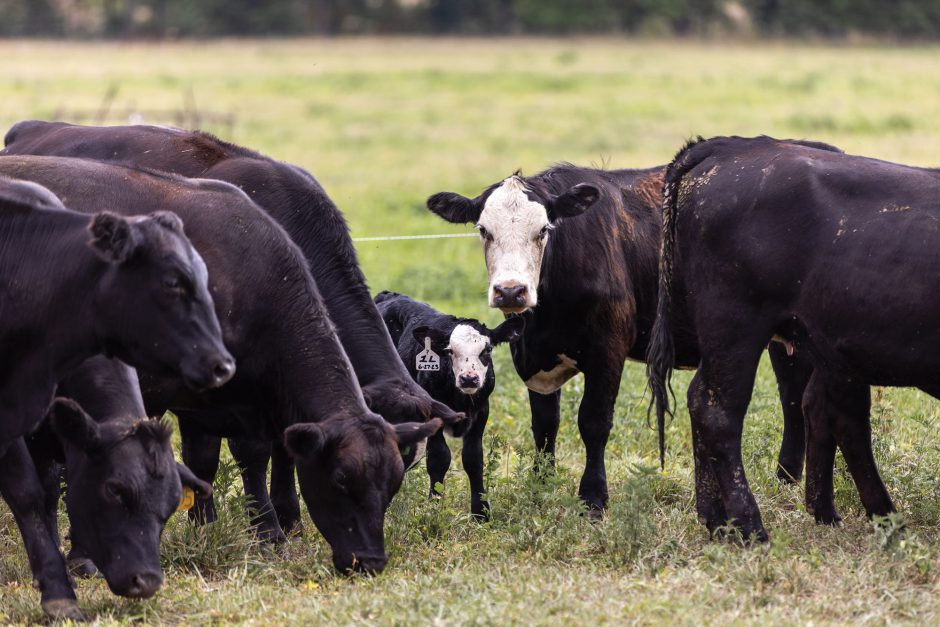
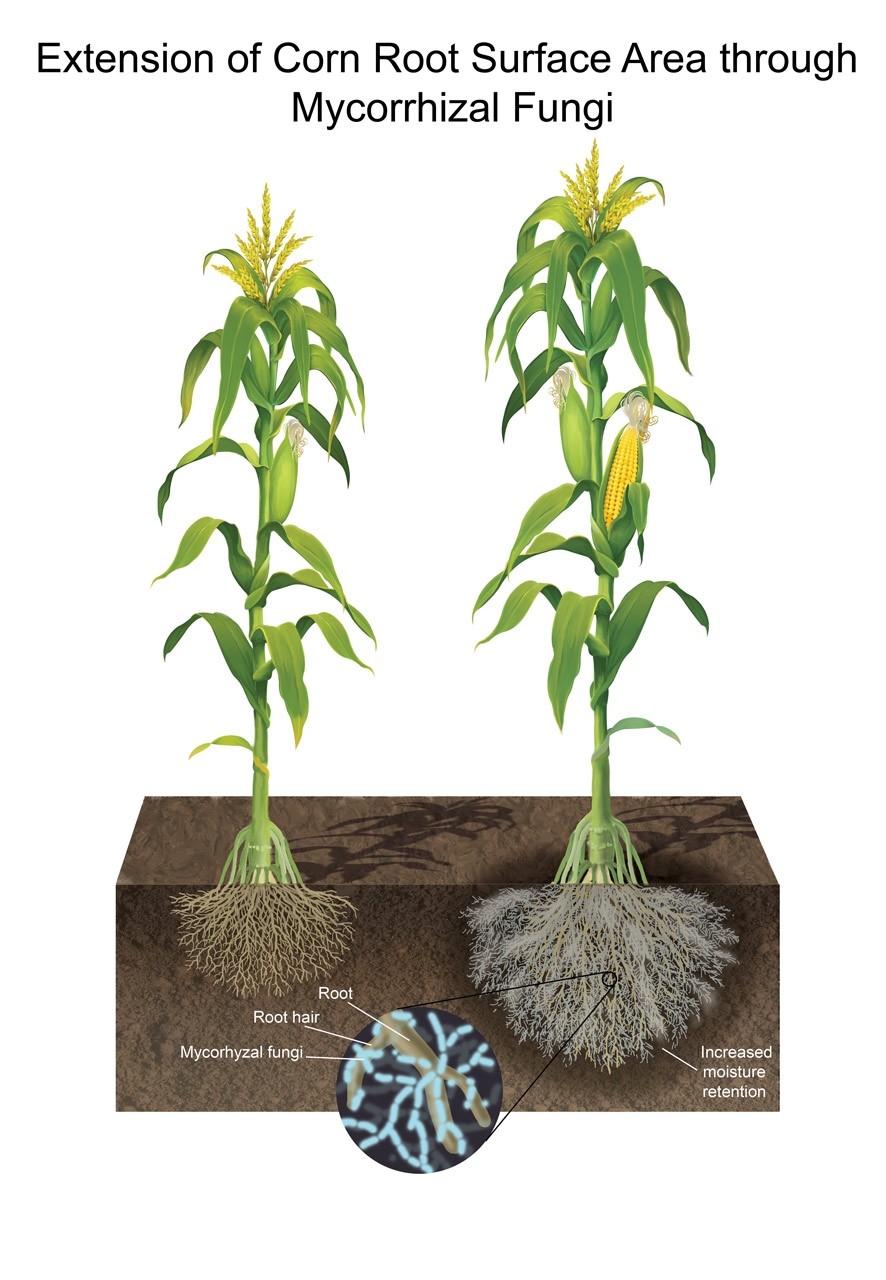
Fungi magic
The project’s fixation on cover crops is about much more than erosion on the half-million acres it plans to work with.
Forget forests, fens and deserts where plants, animals and climate mix it up. In agriculture, the key ecosystem mostly lies beneath the soil surface. It’s not just moles and earthworms in the subterrain. Certain fungi attach to roots and form a mutually beneficial relationship, Myers says. Roots feed fungi by releasing sugars (Thank you, photosynthesis!), and the fungi’s tendrils transfer moisture and nutrients from the soil to the plant. This arrangement works great if roots live in the soil. But the cycle breaks after row crops are harvested.
Unless, that is, farmers then plant cover crops. The fungi will take up with most living roots, so they’re ready and waiting to help the next row crop when it comes in. Preserving this symbiotic relationship year-round improves soil fertility, and, before long, crop yields rise.
Mulching the alleys
These strategies are all well and good for large farms, where economies of scale play out. But the project also offers small and underserved producers a bite of the apple, says Kelly Wilson, associate director of the Center for Regenerative Agriculture. “Many traditional farming practices have increased productivity but also eroded resources and proved detrimental to people and rural communities as well.”
She is working to reverse those trends by recruiting 100 small farms statewide to create climate-smart fieldscapes — areas that will employ at least three regenerative methods — and invite visitors to observe the result. For instance, in addition to using cover crops, the demonstration farms might also use mulching and alley-cropping practices, Wilson says.
Mulching with hay between rows of vegetables not only smothers weeds but also adds nutrients to the soil and reduces the need for tilling. The soil structure remains intact so it can better gather nutrients and absorb water.
Fans of agroforestry will recognize alley cropping as a scheme of growing agricultural crops in alleyways between woody plants, such as chestnut or hardwood trees. The alternating rows of varied plants can diversify income streams, increase per-acre production and improve habitat for wildlife, including pollinators. Plus, each plant has its own way of sequestering carbon in the soil.
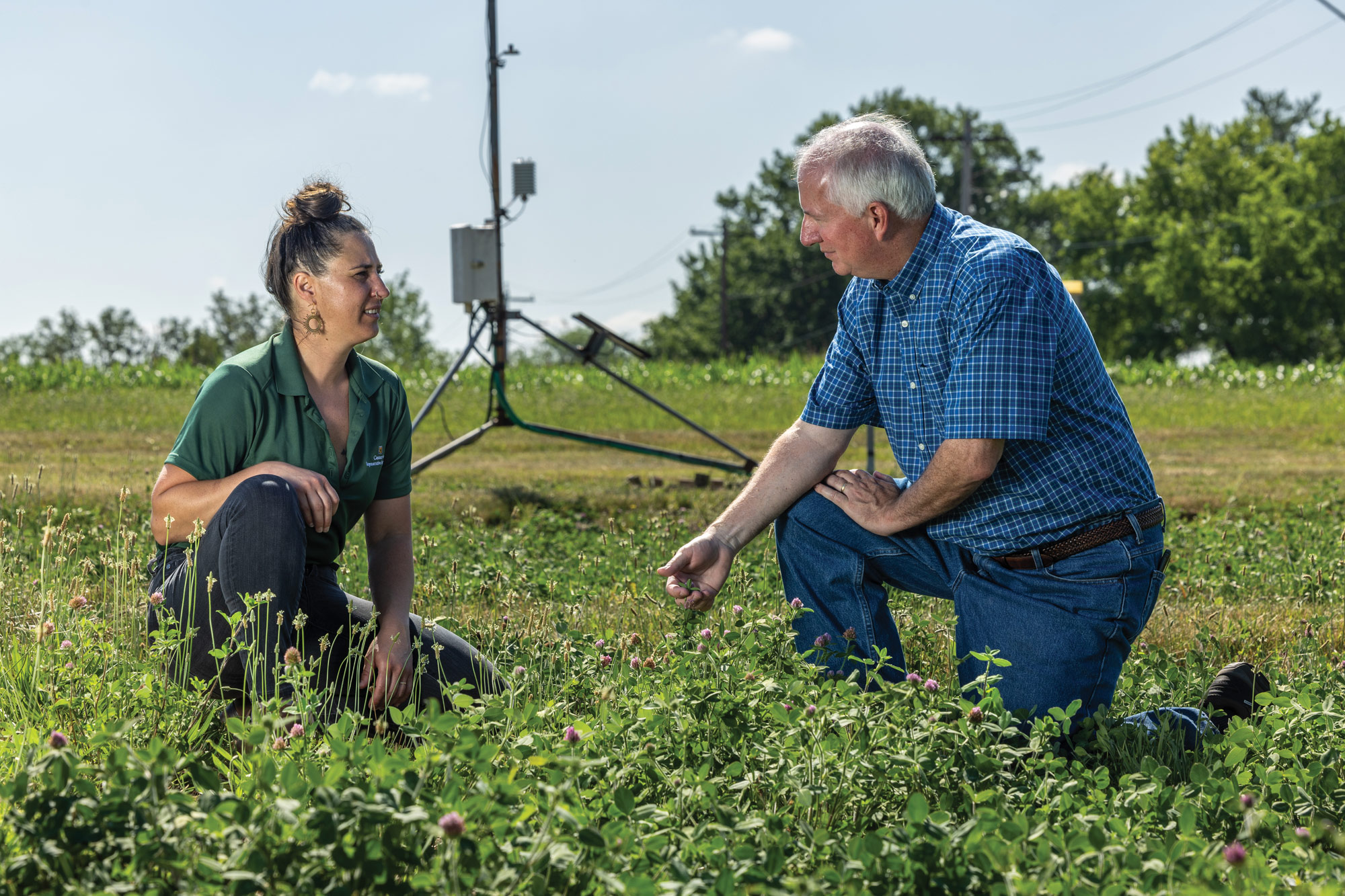
Stasis isn’t cheap
Even when offered evidence-based methods, financial incentives and the best of intentions, farmers may hesitate to give novel approaches a try. “To a cattle guy whose profit-per-acre is only $10 or $15 dollars, trying something new is a big deal. So, the financial assistance from this program really helps,” says Ryan Britt, BS Ag ’00, a fifth-generation Missouri farmer raising cattle and row crops about 50 miles north of Columbia near Clifton Hill. But the resistance goes even deeper.
“The most expensive words in agriculture are, ‘We’ve always done it that way,’” Britt says. “We hold dear to our values. But we also have to ask ourselves if the old reasons still apply today. We need to see that a new way of doing things works and that it’s good for the land and that it’s profitable. That’s a win-win-win.”
Learn more about the project at cra.missouri.edu/mo-crcl.
To read more articles like this, become a Mizzou Alumni Association member and receive MIZZOU magazine in your mailbox. Click here to join.



